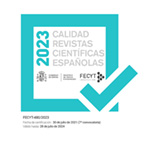“White Europe”: una interpretación alternativa de la frontera sur
Resumen
La definición de la frontera exterior de la UE supone un reto para la geografía política. En este artículo mi objetivo es contribuir a esta discusión, centrándome en la importancia de cuestiones históricas y raciales en el estudio de esta frontera. El artículo comienza con una breve introducción de tres conceptos fundamentales tomados de la geografía política anglosajona: “race”, “racialization” y “white privilege”. En la segunda sección propongo que el proceso de construcción de la identidad nacional española, que se remonta al siglo XVI, es la fundación de los procesos de exclusión racializada en la España actual. La forma que estos procesos toman se discute en la siguiente sección, que se centra de manera particular en las leyes de inmigración actuales. En las conclusiones propongo que existe un solapamiento en las formas de exclusión racializadas españolas y europeas. Un estudio en profundidad de este fenómeno requiere de una aproximación histórica a los procesos de construcción de la identidad nacional en la que los procesos de racialización y white privilege ocupen un lugar centralDescargas
Descarga artículo
Licencia
La revista Geopolítica(s). Revista de estudios sobre espacio y poder, para fomentar el intercambio global del conocimiento, facilita el acceso sin restricciones a sus contenidos desde el momento de su publicación en la presente edición electrónica, y por eso es una revista de acceso abierto. Los originales publicados en esta revista son propiedad de la Universidad Complutense de Madrid y es obligatorio citar su procedencia en cualquier reproducción total o parcial. Todos los contenidos se distribuyen bajo una licencia de uso y distribución Creative Commons Reconocimiento 4.0 (CC BY 4.0). Esta circunstancia ha de hacerse constar expresamente de esta forma cuando sea necesario. Puede consultar la versión informativa y el texto legal de la licencia.









